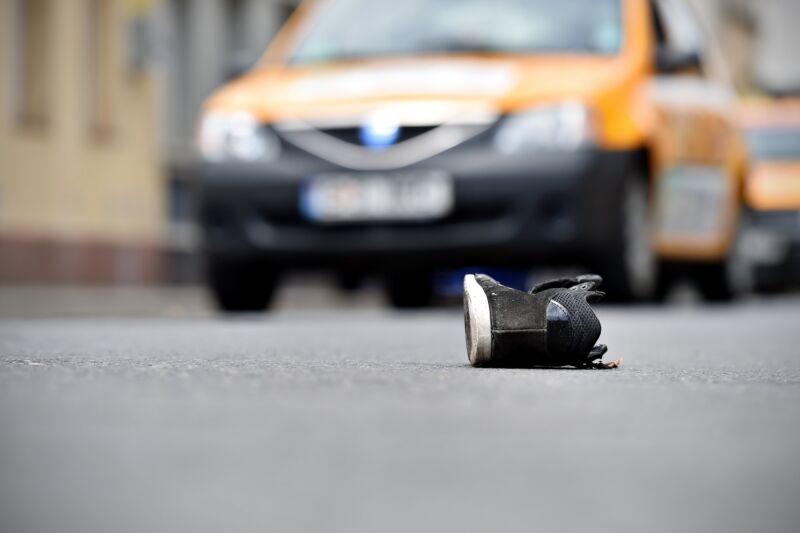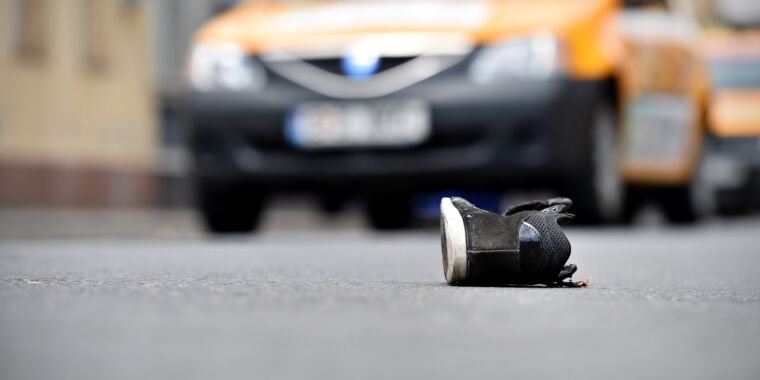
Getty Images
America was a dangerous place to be a pedestrian in 2022. Preliminary data analyzed by the Governors Highway Safety Association (GSHA) showed that 7,508 pedestrians were killed in traffic accidents last year, the highest number of deaths since 1981. But the carnage has been very unevenly distributed; 26 states and the District of Columbia actually became safer for pedestrians by 2022, and the nationwide annual increase in pedestrian fatalities was only 1 percent. Overall, there was a 0.3 percent decrease in fatal vehicle crashes in the US last year.
In recent years there has been an alarming increase in the number of pedestrian fatalities. In 2010, 4,302 pedestrians were killed by traffic in the US, accounting for 13 percent of all road fatalities. But by 2021, the number of road deaths had increased by 77 percent to 7,624.
You may have noticed that this is actually slightly higher than the number the GSHA expects for 2022; Oklahoma was apparently unable to provide data for 2022, and the data reported by the state Highway Safety Offices tends to be about 2 percent larger than the data in the National Highway Traffic Safety Administration’s Fatality Analysis Reporting System. Therefore, for comparison, the 2021 number, excluding Oklahoma, was 7,443 pedestrians.
Which states are the most dangerous?
The GSHA report notes that declines in 26 states and D.C. “could be an encouraging sign that the deadly trend is slowing and even reversing.” But that is not the case everywhere. Arizona, Virginia and Oregon saw the largest increases in absolute numbers in pedestrian deaths, with more than 40 additional deaths in each of the three states compared to last year.
But some smaller states showed larger year-over-year percentage increases; another seven deaths in New Hampshire increased that state’s pedestrian deaths by 77 percent year over year. That effect was felt in the states that saw their streets become safer for foot traffic — New Jersey had the largest absolute year-over-year absolute drop (27 fewer pedestrian fatalities) but was right in the middle of the pack in terms of year-over-year percentage drop, and a 20-foot pedestrian reduction in California was only a 2 percent drop.
-
A bar chart showing the change in pedestrian deaths for 49 states plus the District of Columbia between 2021-2022.
GSHA
-
A bar chart showing the percent change in pedestrian deaths for 49 states plus the District of Columbia between 2021-2022.
GSHA
The GSHA also notes that if the one percent increase it saw in SHSO-reported data is also reflected in NHTSA’s FARS data, the total pedestrian death toll could exceed 8,000 by 2022.
What causes this?
It has become extremely fashionable lately to blame all traffic deaths on the ever-growing and braggart trucks and SUVs that have spread on our streets. Indeed, the GSHA report points out that the number of pedestrian deaths caused by SUVs increased by 120 percent between 2012 and 2021, while the increase in deaths caused by cars only increased by 26 percent. In absolute numbers, far more pedestrians were killed in 2021 by people driving cars (2,605) than by people driving SUVs (1,773), but last year there were another 1,115 pedestrian fatalities in pickups.
But there are other factors at work as well. There is ample evidence that speeding became much more common during the pandemic and that those speed demons did not let go of the gas even as traffic density recovered in 2021.
Alcohol abuse also plays a role here. And not just for motorists: The report found that 30.5 percent of pedestrians aged 16 and older had a blood alcohol concentration of at least 0.08, the limit above which one is considered disabled. Meanwhile, 19 percent of pedestrian deaths occurred with a driver with a BAC greater than 0.08.
Lighting conditions seem to play a very important role in the increased pedestrian death toll. Between 2010 and 2021, there was a 30 percent increase in pedestrian fatalities during the day, but this increased by 86 percent at night. In 2021, just over 77 percent of fatal accidents (5,645) occurred in the dark; in contrast, less than 20 percent happened during daylight hours (1,430), while the remaining ~3 percent happened during sunrise and sunset.
Nighttime crashes involving pedestrians were more common on high-speed roads such as interstates, freeways, and arterial roads compared to local roads. A lack of sidewalks was also an obvious factor: Every year since 2017, the percentage of pedestrian fatalities that occurred in a place without sidewalks has risen from 59 percent to nearly 69 percent by 2021.
What is the solution?
Our roads don’t have to be so dangerous for pedestrians. The GSHA report points out that NHTSA has proposed a “pass/fail” pedestrian safety rating for all new cars and light trucks, but notes that even if it passes, it won’t include that data as part of the New Car Assessment Program that gives new vehicles a safety rating. (NHTSA’s public comment period is open until July 23, and you can submit your comments to the agency online.)
And as we reported late last month, NHTSA wants automatic emergency braking systems with pedestrian detection to become a mandatory safety feature on all new cars. Currently, almost every new car includes this feature as standard, but not all of them offer pedestrian detection.
The GSHA also highlighted some other strategies to make our roads safer. California, Maine and Minnesota have each refined their driver learning materials to explain the six principles behind a national road safety strategy: death and serious injury are unacceptable; people make mistakes; people are vulnerable; responsibility is shared; security is proactive; and redundancy is crucial. Montana and Florida are also incorporating pedestrian and bicyclist safety into their drivers’ curricula.
Hawaii, Oregon, Delaware and Utah are all engaging with homeless communities to account for their experiences. For example, Utah’s data showed that many pedestrian fatalities occurred near homeless shelters.
Some states have even stepped up traffic enforcement. According to the report, California, D.C., Maine, Maryland, Massachusetts, New Jersey and South Carolina have all begun conducting sting operations “where plainclothes officers cross at a crosswalk, identify drivers who are not yielding the right of way and radio to another officer who is ahead. is stationed and which stops the driver.” As a DC resident I can only suggest they try and enforce the turn sign to M St SW on 4th St SW for a while because I’m tired of being nearly run over there by idiots who can’t read a road sign.
Some of the biggest effects can be felt after redesigning our built environment to make it friendlier to people who walk. As already noted, a lack of sidewalks is a factor in most pedestrian deaths, and there are many improvements to infrastructure that improve safety, including lower speed limits, road restrictions (taking away lanes for cars), better lighting, and raised crossings, escape islands for pedestrians and flashing lights at crossings. However, the GSHA points out that state highway safety agencies are usually not the government organizations responsible for implementing such solutions.

